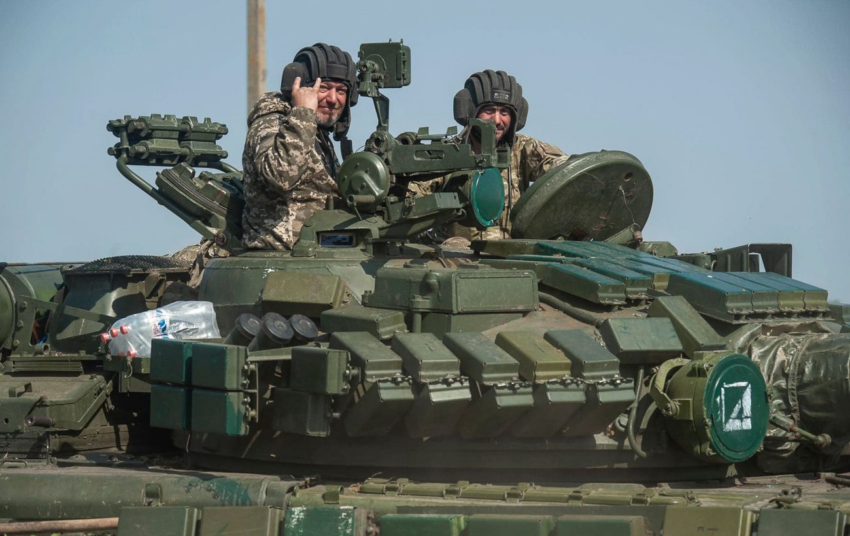According to the American magazine, such a tank advantage on the part of the Ukrainian Armed Forces is achieved through the use of drones, which drive Russian tanks kilometers away from the front line and force them to operate only from covered, camouflaged positions away from the front line.
Forbes noted that due to such restrictions, the Russian Army tanks essentially become inaccurate howitzers, rather than combat vehicles for conducting assaults, which was planned by the developers of the equipment.
But drones are changing the rules of war, and the modern theatre of war is increasingly dominated by robotic systems of all types.
In their article, Forbes reviewers analyzed the testimony of one Russian blogger, which was translated by the Estonian analyst WarTranslated.
In particular, a “war correspondent” from an aggressor country reported that, against the backdrop of restrictions on the use of tanks by Russian troops, Ukrainian tanks operate at the front “more freely” because the Ukrainian Armed Forces have achieved “sufficient scale and diversity of their drones” and “honed the tactics of their use.”
The American magazine’s publication indicates that Ukrainian tanks can drive right up to the line of contact in order to directly strike enemy targets with their cannons and machine guns.
Forbes writes that the possible tank advantage of the Ukrainian Armed Forces is demonstrating a “reverse development” in the large-scale war of the Russian Federation against Ukraine. Since at the beginning of the Russian full-scale invasion, Ukrainian brigades “rarely” fired direct fire from tanks due to the huge advantage of the occupiers in artillery and aviation.
But “tiny drones and jamming systems” are changing the battlefield and tilting the tank advantage in Ukraine’s favor, the publication says.
It is also noted that the Russian side complains about the high intensity of radio suppression of its drones by the Ukrainian Armed Forces soldiers, which does not allow drones to similarly drive tanks away from the front lines.
The exception to this new dynamic is the Kursk region, where Russian troops use fiber-optic drones, making them impossible to jam using traditional electronic warfare. Russian drones have recently been seen hitting Ukrainian tanks in this region.
Forbes concludes that the Ukrainian Armed Forces have gained the advantage of tanks thanks to their drones in certain areas of the front, but the Defense Forces still face the problem of a lack of infantry.
Tanks in the Ukrainian army
Let us recall that in the summer of 2024, the Ministry of Defense reported that since the beginning of the large-scale military aggression of the Russian Federation, almost 40 models of armored vehicles, both domestic and foreign-made, have been approved for use in the units of the Defense Forces of Ukraine.
The Ministry of Defense then specified that the fleet of combat armored tracked and wheeled vehicles, in particular, was replenished with Abrams tanks (American), Leopard (German), Challenger (British) , and AMX-10 RC light tanks (French).
It should also be noted that, according to the specialized publication ” Militarny “, Ukraine met the full-scale invasion of the Russian Federation in February 2022 mainly with Soviet military equipment and weapons, which the Ukrainian Armed Forces had at that time.
In general, at the beginning of 2022, the main tank in the Ukrainian army was the T-64BV, as well as vehicles modernized at different times on its base. Among other things, the arsenal also included T-72 of various modifications and gas turbine T-80BV, which in small quantities underwent upgrade programs during major repairs or removal from storage.
The Military Balance report indicated that before the major Russian attack, Ukraine had 858 operational tanks in service. There were also a number of them in various technical conditions in storage bases and in the storage areas of military factories.
